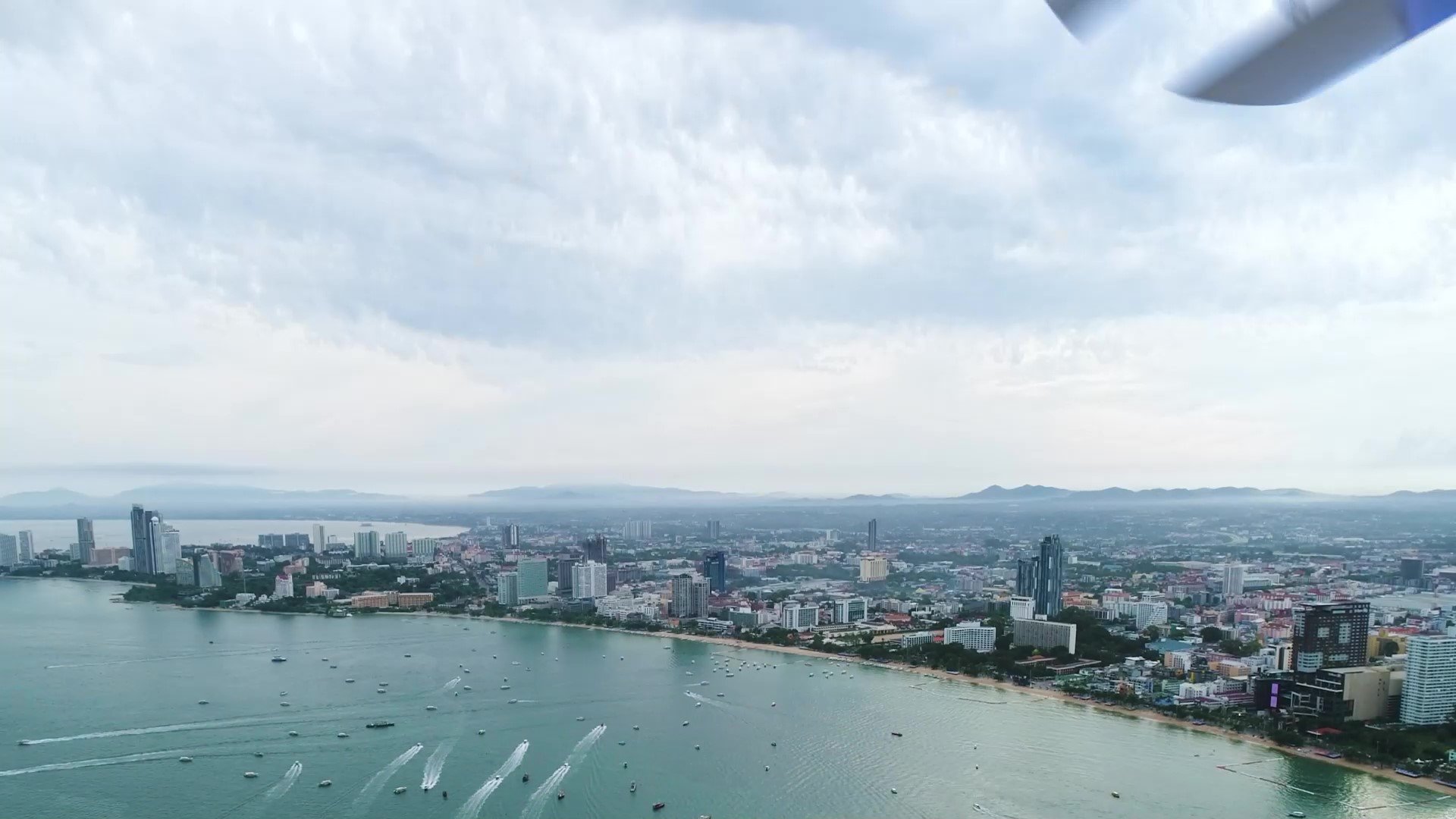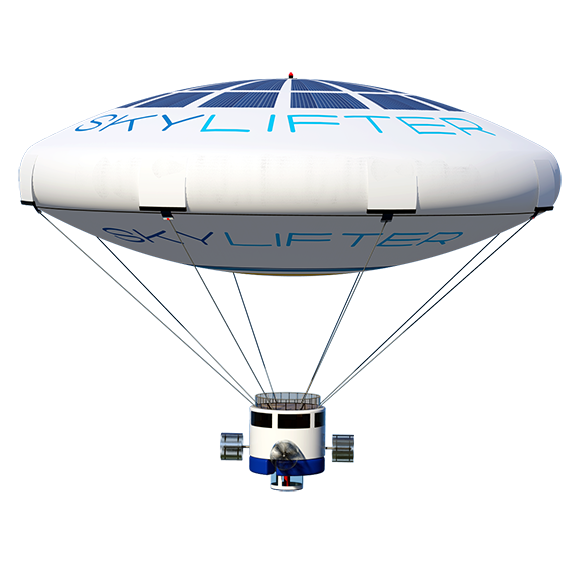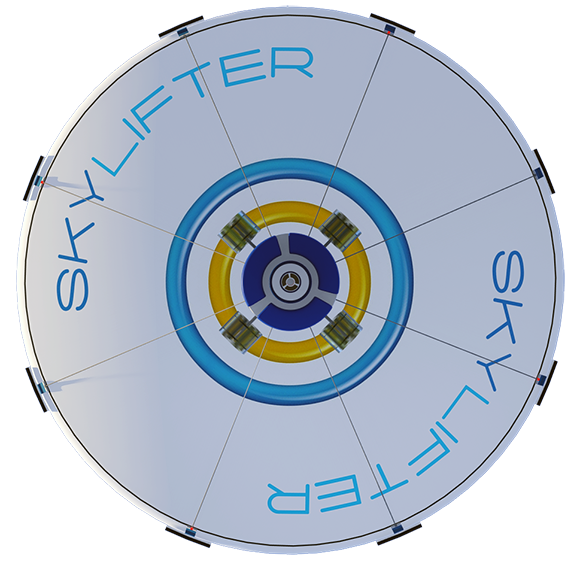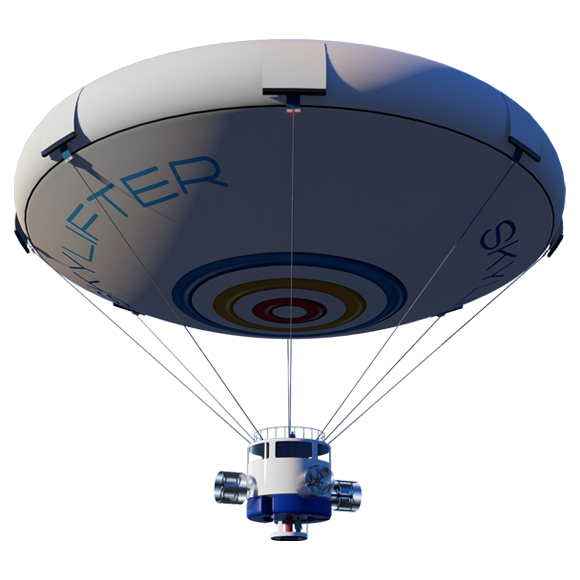
Design
enabling practical and cost-effective turnkey solutions for various markets
SkyLifters arrangement
Aircraft type
SkyLifter aircraft share a common arrangement of a gas-filled lenticular-shaped aerostat (enabling buoyancy to float) and an underslung pod. The pod position helps with stability and incorporates habitable areas as well as the main aircraft systems for power, control and communication.
The aircraft feature propellers for thrust and, if desired, the aircraft may float endlessly without power. Therefore, with minimal cost and unrivalled flight duration.
The design utilises systems, materials, and engineering that are already proven, and has established suppliers. Our innovation is to combine and integrate these components such that they enable the safe operation of the stable hook to the performance level demanded by selected end-users.
The simplicity of the design arrangement may seem obvious, but it has taken many years of hard work and investment to create the overall package. Our intention is to enable practical and cost-effective turnkey solutions for various markets.
-

Symmetrical discus-shaped (lenticular) aerostat (a 'flattened' sphere)
The omni-directional shape avoids the need for SkyLifters to turn and face into wind, greatly simplifying the handling process for disposable payloads.
-

Even distribution of payload
External, regular-spaced suspension lines avoid the need to build heavy and complex internal support structures, thereby lowering the cost of MRO, and helping to stabilise the aircraft.
-

Propulsion and directional control system
Propellers provide almost instant vectored thrust to any 360-degree direction. These supplement the natural passive stability arrangement with an active automated dampening control.
Performance
SkyLifters are not designed to fly as fast as jets or rotor-craft. We are not competing with fast-transit operations. At around 45 knots (80kmph) a SkyLifter is used for non-time-sensitive applications, of which there are many.
And SkyLifters have a low demand for ground infrastructure and therefore can operate in rural areas. With low maintenance requirements (especially when compared to helicopters), the operational utilisation rate is high. In other words, more time spent flying and earning revenue, with less time being serviced on the ground.
